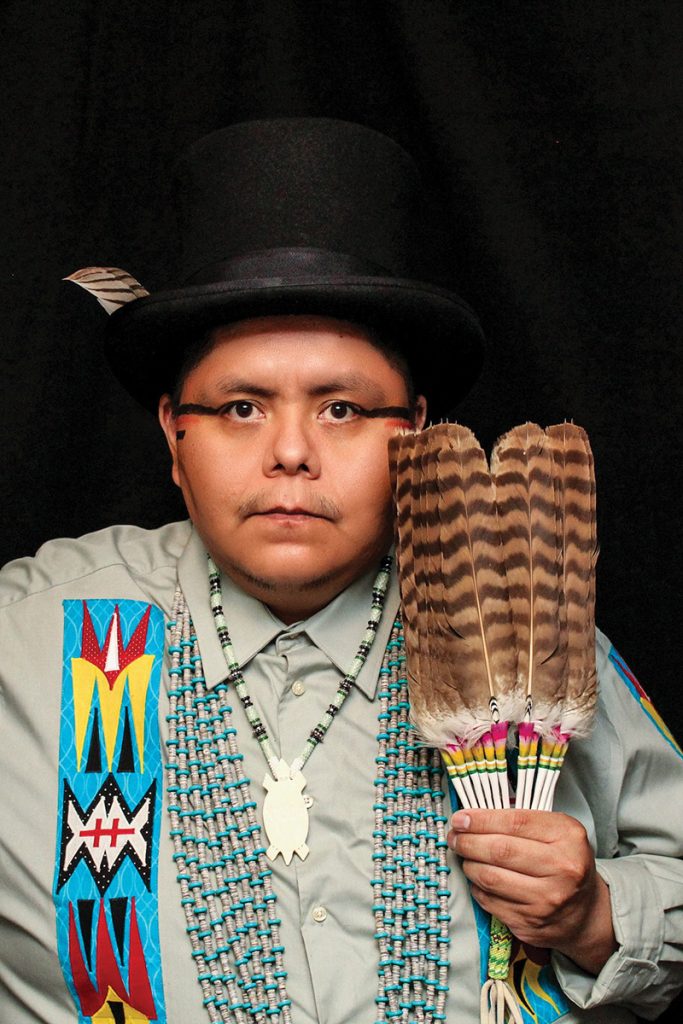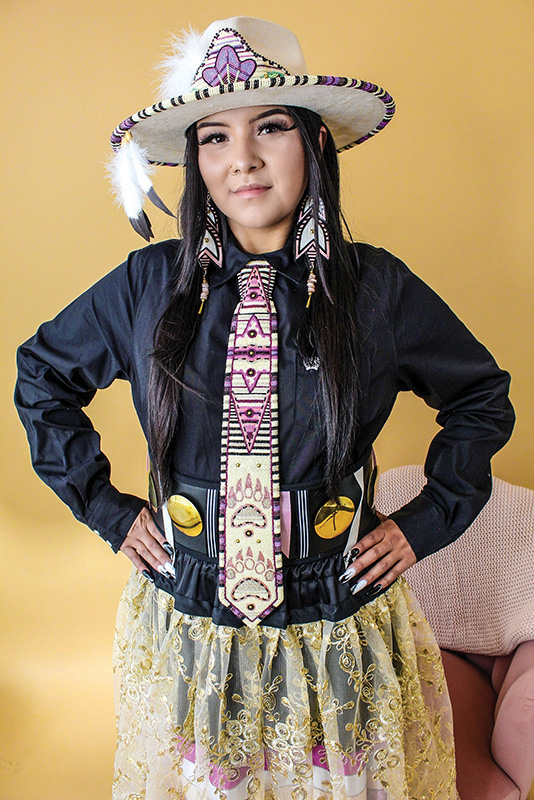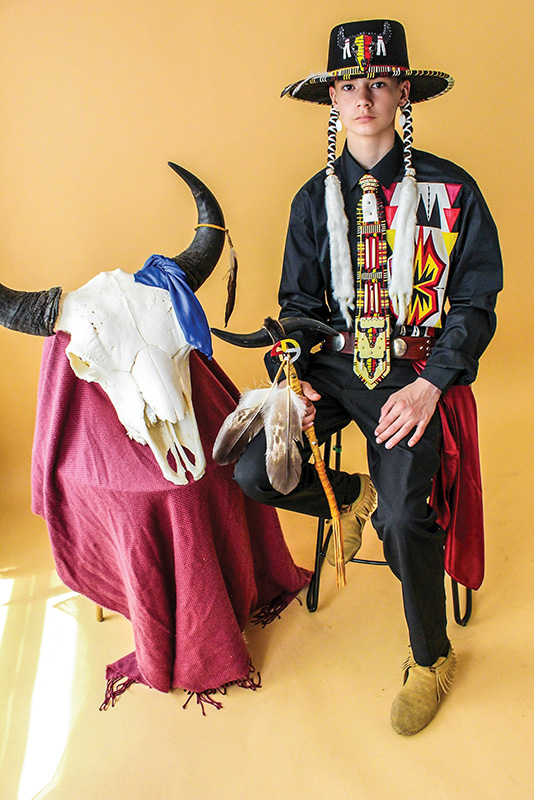Codijo “Chebon” Yazzie’s beadwork draws the eye with bright colors, bold patterns and beautiful textures. Only an up-close look at his designs reveals the attention to detail and intricacy of the beading. Each “seed bead” is millimeters in size and hundreds of them are strung together to adorn hats, neckties, vests and shoes. The skills he uses in his art are in his blood, carried on through a family legacy.

Codijo Yazzie’s mother, Rosine Tree, and his sister are both fashion designers, focusing on Native designs, and they showcase their work at fashion shows around the country. Last year, they were invited to have their designs in the first annual Indigenous Fashion Show at San Diego’s Sycuan Powwow. Yazzie attended the fashion show as a photographer. “I was inspired by all the designers that attended the fashion show, and I loved all the different styles and seeing the models walk down the runway,” says Yazzie.
Yazzie grew up in the Navajo Nation in Upper Fruitland, N.M. He’s Diné (Navajo) and Kiowa Camanche and identifies his clan as Tsenjikini Ta’baaha’ (Honey Combed Rock Edgewater) Tachii nii (Red Running into Water). He later moved to Logan where he creates his beaded designs. Yazzie’s older sister, Cheyleen, taught him how to bead. They started first with single-needle stitches, then graduated to two-needle stitching. “She also showed me how to do different techniques while working with seed beads,” says Yazzie, who practiced beading on small items for years.
“As soon I got a hang of beading, I [started] making dream catchers, beaded necklaces, beaded handbags, beaded horse masks and beaded elk masks for my close friends and family for gifts.”
In teaching Yazzie how to bead, his sister continued a rich tradition in their family, which has a history studded with artists and designers (going back to his great, great, great grandfather, Haungooah, who has some of his hide paintings in the Smithsonian). “Growing up, [I saw] how talented my family is—watching them doing all kinds of Native American arts, painting, sewing and beadwork and Native American designs,” he says.


Yazzie’s beaded ties and hats are made with seed beads, buck skins and deer bone. “I wanted to do something different for Native fashion,” he says. “My ties and hats can be used for nice events, like weddings and graduations.” He directs photoshoots of his own work using local Native Americans in Cache Valley as his models. He sent some of his photographs to the organizer of the Indigenous Fashion Show in San Diego. Yazzie says she was looking to put more men’s fashion designs in the show this year, and she loved his beadwork and invited him to participate.
As he was inspired by his family and the Native American designers in the fashion show, Yazzie hopes his designs in the fashion show will inspire others. “I want our Indigenous young people to understand how it is important to carry different arts to express who we are,” explains Yazzie. “Our culture is important. This talent needs to be carried on.”
Trading Post
Native American designer Codijo Yazzie says he gets his art supplies, including the colorful seed beads for the beadwork on his projects, from the Native American Trading Post in Salt Lake City. The Trading Post also sells Powwow supplies, crafts, jewelry, blankets and music. Native American Trading Post, 3971 S. Redwood Rd., SLC, natput.com


